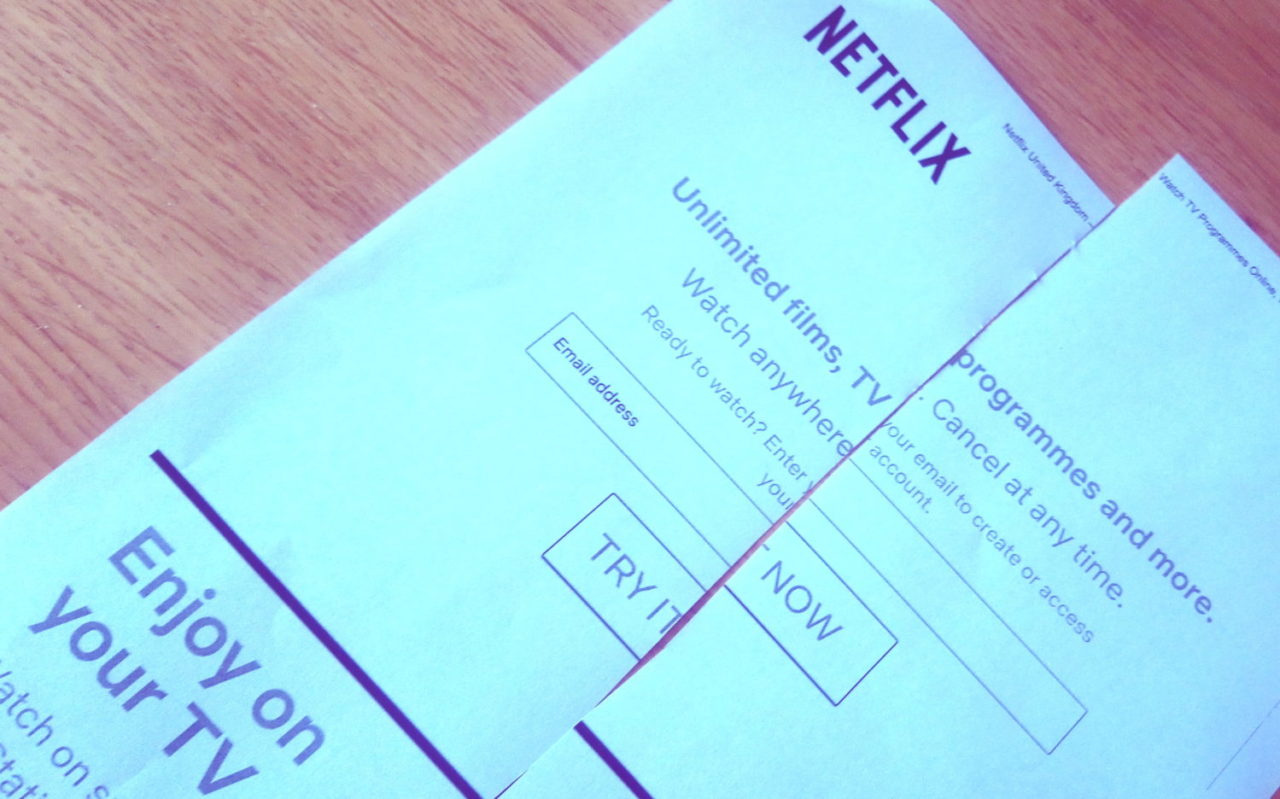I am an independent telephone/broadband engineer. I’ve recently carried out work at a couple of houses to address Netflix buffering.
Was it fixed? Yes. There is a simple solution which may just lead to a “buffer-free” life.
However, I thought I’d put the whole issue in perspective first. Please bear with me, but I think it’s important.
“I’m Amazed It Ever Works At All”
My customers laugh when I say this about broadband and wifi. However it’s absolutely true. Your film has to overcome major obstacles before it reaches you:-
Old Hardware, Modern Demands.
Streaming video was never the plan for our telephone infrastructure . In most cases, your broadband arrives over two wires from a telephone exchange (or local street cabinet). It travels via damp manholes, open junction boxes on poles, and ancient cabling. It is utterly amazing to get 58Mb download this way (yes, I’ve witnessed 58Mb) . Hence, your problem may be outside your doors and beyond your control. This is technology pushed to it’s limit. Be patient or get fibre or cable.
The Hosepipe Problem.
You share your internet “pipe” with fifty or more connected in the neighbourhood. Think of your broadband as water running through a pipe. The more people using the supply, the slower the flow. It’s called contention. More here.
Problems Indoors
Once a (hopefully) good speed service reaches your house, there may be more challenges. You may be running your broadband via a poor-quality plug-in filter (instead of of these). Also, there may be ancient, unused, unknown wires connected to your master socket which attract interference. Even with these removed, your wifi has to cope with the electronic,unseen “background noise” of microwaves, heating pumps, washing machines, neighbour’s wifi , etc, etc.
Therefore, if it makes it to your TV without problems, I’m impressed. As I said above, I’m amazed it ever works at all.
Any Good News?
Yes! On the back of your broadband router, there will be several identical sockets which, in most cases, remain unused. These are variously referred to as “ethernet”, “LAN” (local area network”) or RJ45 sockets. These are your friend. They send out the same data as your wifi. However, they aren’t subject to it’s potential interference.
Wait! I Don’t Want Cables Everywhere!
You did you say you wanted Netflix without buffering, didn’t you? When you watch something on your 84-inch screen, you don’t carry this around the house, do you? I didn’t think so. Therefore, an unobtrusive cable from router to TV may just solve your problem.
In our experience, there is usually a route for a small cable from your broadband router, via the exterior of the house, and back in to a socket near your TV. The cables don’t have to look like drooping washing line. We enjoy hiding them.
Won’t Cables Attract Interference?
Probably not if the correct cable is installed. The latest “Cat 6a” cable is designed to carry high-speed data over copper wires, and be “shielded” from interference. Installed correctly, interference and loss of signal is virtually eliminated. I’ve seen this work very well indeed.
Can I Do It Myself?
Possibly, if you are fairly DIY-skilled. I’ve blogged on this already here. However, I would plead that, if you do it, you take advice from the internet and do it right first time.
Can I Get an Engineer To Do It?
Yes, but I would recommend an independent telephone/broadband engineer. Sadly, most electricians don’t understand data cabling, and treat it like mains electricity. Meanwhile, independent engineers like us spend time fixing their mistakes.
Can You Help?
If you are in North East England/North Yorkshire, then “possibly”. Outside the area, I may be able to refer you to one of a network of informal contacts. Meanwhile, If you email me with a query on Netflix buffering, please bear in mind that this website is not packed-full with annoying adverts, so I make very little revenue out of sharing my knowledge. Therefore, please leave me a favourable Google or Facebook “review” (less than ten kind words will do) to help my web searchability. It helps me to keep giving free advice.


Hello, came across your website and could do with some help if possible.
I have just moved home and waited patiently for two weeks for my broadband, but it turns out it doesn’t work, as the socket is broken. When I moved in the faceplate was gone and wires seemed loose, so have had to plug into the test socket. Open reach are coming to take a look, but hoping to avoid the hefty bill if possible. Can’t seem to attach an image here but any advice would be very much appreciated!
Thanks for reading
A replacement socket can be bought on-line, and would be easy to fit. If you ar enot confident in doing this, a local independent engineer could help. Email me via the contact page if you would like me to find one. I will need your postcode.